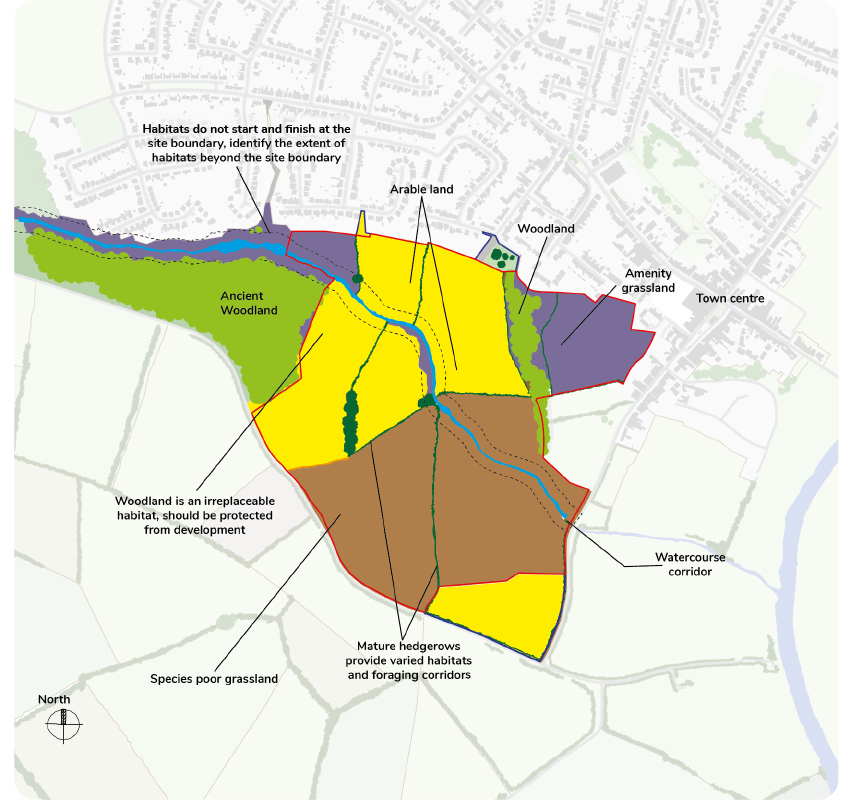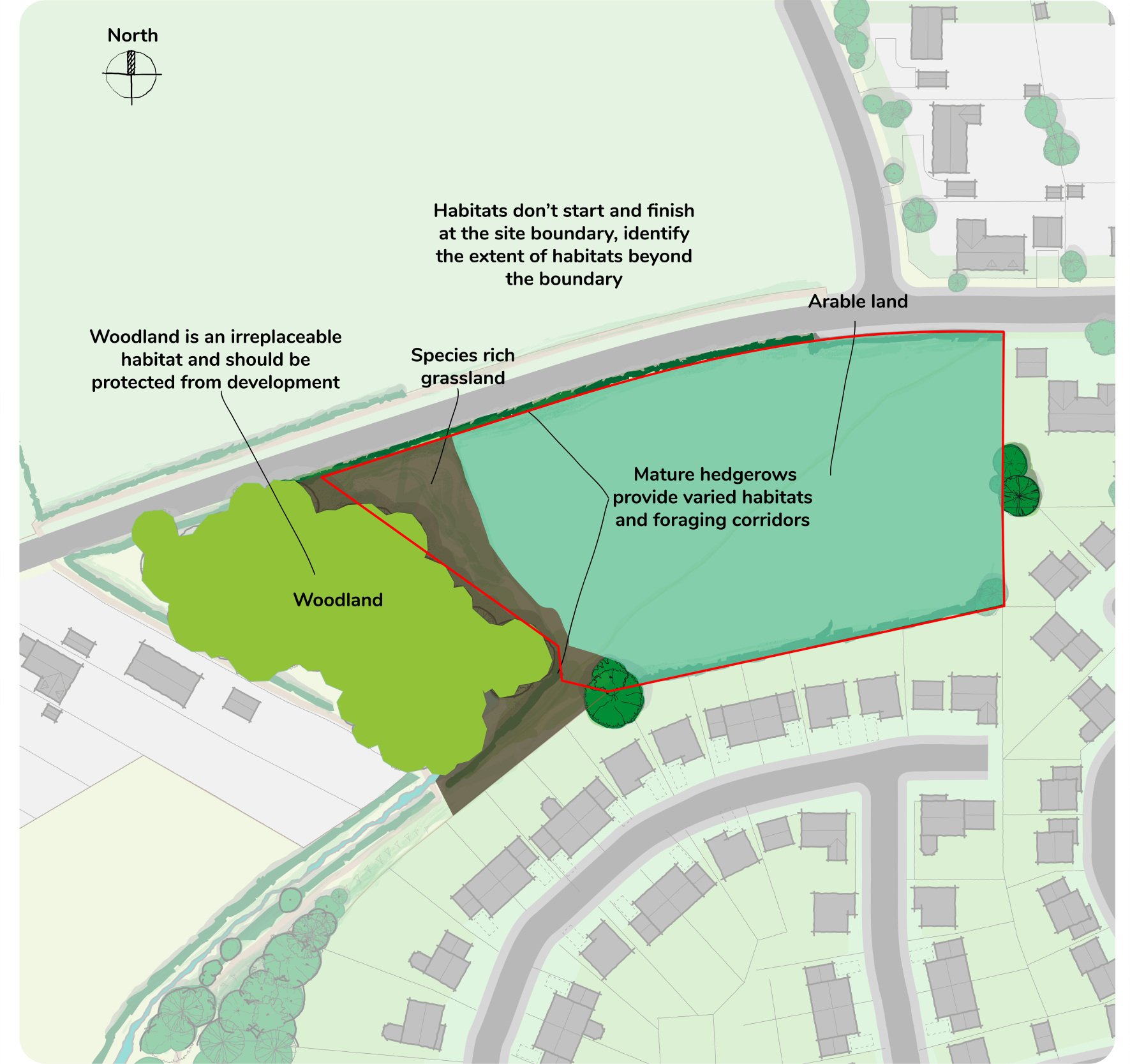p26.
South and Vale are rich in biological diversity (“biodiversity”). Biodiversity underpins our relationship with the natural world and is key for our own wellbeing, from human health to food production. Historic and modern declines in biodiversity mean that bold action is required to not only minimise impacts but ensure that ecosystems are left in a measurably better state than they were before. It is essential that the masterplanning and design process acknowledges existing biodiversity assets, understands the environmental context of those assets and takes steps to deliver tangible net gains for biodiversity.
p27.
Developers should engage with competent ecological advice and undertake ecological surveys at the earliest opportunity. This will ensure that the masterplanning and design process is informed of all biodiversity assets on site and integrates strategies for delivering biodiversity net gain. Developers are encouraged to engage with the local planning authority through pre-application advice to discuss how their development can deliver biodiversity net gain.
Key ecological considerations
p28.
There are key biodiversity assets that must be understood and considered during the masterplanning and design process of any development. These are:
- Habitats and features of increased ecological value, especially irreplaceable and priority habitats;
- Species assemblage, especially protected species and priority species;
- Sites formally designated for their nature conservation value – Special Areas of Conservation (SAC), Site of Special Scientific Interest (SSSI) , Local Wildlife Sites (LWS), etc.;
- The baseline contribution that the existing site makes towards biodiversity. This will influence the amount of biodiversity net gain that a development can deliver.
p29.
The biodiversity mitigation hierarchy should be applied to all developments. These required steps should be taken to avoid impacts where at all possible, mitigate when impacts cannot be avoided; and finally compensate for any residual impacts.
p30.
Impacts can be direct (e.g. loss of habitats to development) or indirect (e.g. increased footfall resulting in deterioration of habitats). Developers will be expected to identify and justify impacts against the biodiversity mitigation hierarchy.

